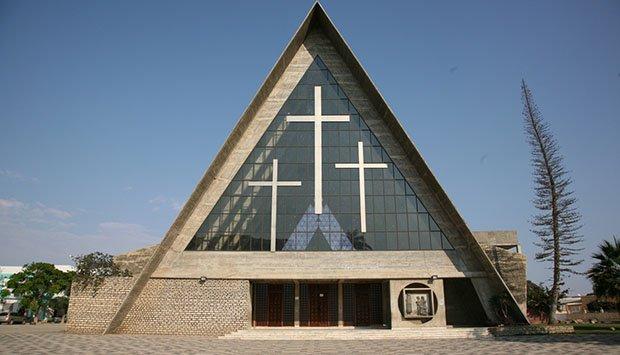Africa-Press – Angola. Government of Benguela created a specific program for the recovery of cultural assets, recognized as national historical and cultural heritage, destroyed by natural phenomena, calamities and the armed conflict
The various monuments and historic sites in Benguela continue to deteriorate in the eyes of society as a whole, leaving no traces for the knowledge of the future generation.
With numerous monuments, some of which are centuries old, Benguela sees today the deterioration of these places becoming a reality.
Divided by different characteristics, these spaces include the Benguela Municipal Administration building and the Benguela Courthouse, the Catumbela Fort, the Church of Nossa Senhora do Pópulo, the National Museum of Archeology and the Regional of Ethnography, in Lobito.
This historic ensemble also includes Largo da Peça, the facilities of the former Angola Sugar Company, which currently houses the Benguela Young Painters Nucleus, and the building of the former Cabo Submarino company, which used to answer the questions of the culture of the province, but it was destroyed by fire.
Future Projects
In the context of the preservation, conservation and inventorying of monuments and historical sites in Benguela, in 2014, the Directorate of Culture developed studies to know the nature of these buildings and other important places, in a total of 12 monuments and 7 classified archaeological complexes, as well as as 133 monuments, 9 sites and 2 inventoried archaeological complexes.
Despite being spread throughout the province, the municipalities of Lobito, Catumbela, Benguela and Baía Farta, together comprise 85 percent of these spaces, existing since colonial times.
The others, existing in the other municipalities of the province, were destroyed by natural phenomena, calamities and the armed conflict.
Due to this situation, the Provincial Government of Benguela created a specific program, which includes restoration work in these places.
Given the urgency, the local government intends to accelerate the materialization of the aforementioned actions, having already some specific locations, among which the Cine Nimas 500, the Cultural and Recreation Center of Cubal, the Cine Benguela and the National Museum of Archeology. The space, where the submarine cable was installed, destroyed by fire, is another of the places to be rehabilitated, with the construction of a modern-style headquarters.
Mischaracterization
Historian and researcher Joaquim Grilo told yesterday that he regrets the fact that, to date, the monuments and sites of Benguela continue to be abandoned to their fate, without the least attention. “Such behavior also detracts from the historical originality of the province, internationally known for some of these historic sites”.
For the specialist, it is urgent to recover these places, especially the Igreja do Pópulo, whose first restoration was carried out in 1952 by the Portuguese architect Fernando Batalha, who designed the city of Lubango and built the Cinema Teatro Monumental.
In Catumbela there are some ruins and also a fortress, built in 1846 by Francisco Craveiro Lopes. In Dombe Grande there was another one, made of raw stone, which ended up disappearing with time. Many of these monuments, explained Joaquim Grilo, have not yet been cataloged by the local government, but due to their historical value they deserve to be inventoried and recovered.
“The Camunda Cemetery, which dates back to 1835, is another monument of respect that should be better valued”, maintained the historian.
Current reality Of Monuments
Among the most important local monuments, the highlight goes to the National Museum of Archeology, which receives 500 visitors monthly, mostly students from various national and foreign educational institutions.
The existing archaeological research at the institution dates back to 1800. Currently, the institution has 15,000 pieces in its historical collection.
The specialist in tourist and environmental resources, Manuel Bandeira, considers that the province’s monuments and sites, due to their history and cultural value, can contribute to the growth of the local economy, but, for that, they need to be recovered.
“The country is in a position to show the world these values and attract more tourists, capture revenue and also create new job opportunities for young people, through these monuments,” he said.
For More News And Analysis About Angola Follow Africa-Press






